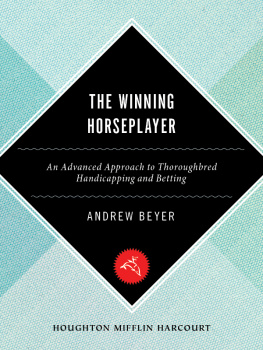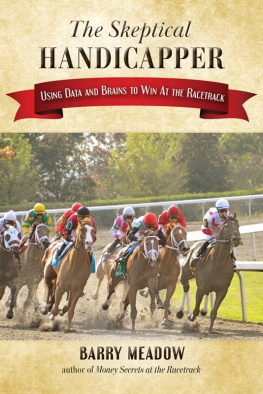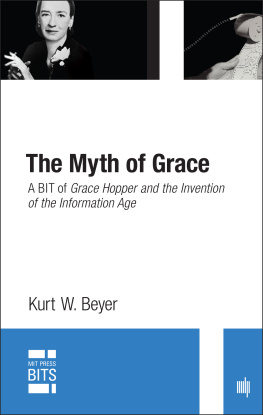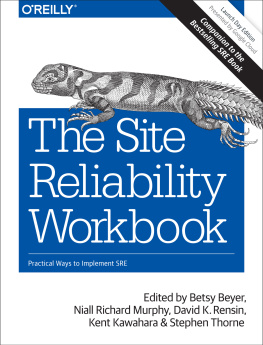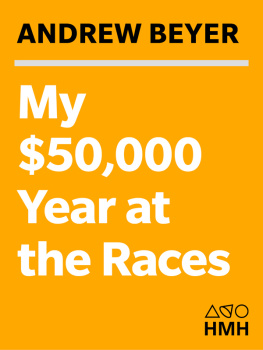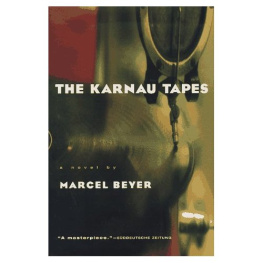Preface copyright 2007 by Andrew Beyer
Copyright 1983, 1994 by Andrew Beyer
All rights reserved
For information about permission to reproduce selections from
this book, write to Permissions, Houghton Mifflin Company,
215 Park Avenue South, New York, New York 10003.
Visit our Web site: www.houghtonmifflinbooks.com.
Library of Congress Cataloging-in-Publicalion Data
Beyer. Andrew.
The winning horseplayer : an advanced approach to
thoroughbred handicapping and betting / Andrew Beyer.
p. cm.
Originally published: 1983. With new pref.
ISBN -13: 978-0-618-87178-0
ISBN -10: 0-618-87178-0
1. Horse racingBettingUnited States. 2. Beyer, Andrew.
3. HorseplayersUnited StatesBiography. 1. Title.
SF 332. B 494 2007 798.401dc22 2006100901
Printed in the United States of America
DOC 10 9 8 7 6 5 4 3 2
Past performance charts are reprinted with permission
from the copyright owner, Daily Racing Form. Inc.
and Equibase Company. Copyright 2006.
Preface
When I wrote The Winning Horseplayer in 1983, I stressed on page 1 a crucial truth about playing the horses: The game is always changing. Smart bettors must observe and adapt to the changes, and sometimes they must alter or jettison handicapping methods that they once held dear. This inescapable fact of racing life might dictate that a book more than twenty years old would be dated and irrelevant. But the core of The Winning Horseplayer is today as important as ever.
The essential message of the book is this: Bettors must learn to watch races closely and intelligently. Instead of relying solely on data in the past performances, they must make judgments based on what horses do on the track.
I came to this conclusion when I realized I could not depend indefinitely on the speed figures that made my early years as a horseplayer very profitable. I began developing and using figures in the early 1970s, when the vast majority of bettors believed that horses' final times were irrelevant. The opportunities were wondrous, and I didn't need any other tools to make a profit at the track. I paid scant attention to the way races were run. But inevitably other horseplayers began to see the merits in figures. My book Picking Winners made the case for speed handicapping and spawned devotees of my method. Commercial purveyors of speed figures sold their numbers to high-rolling clients. As more players bet on top-figure horses, they depressed the odds accordingly. Meanwhile, people who bet on the basis of subjective observations of races were likely to get greater value on their selections. So I decided to learn the methods of the horseplayers who called themselves "trip handicappers" in order to have an edge as the game changed.
I could not have imagined then how it was going to change. In 1992 the Daily Racing Form came to me and my partner, Mark Hopkins, and asked us to provide Beyer Speed Figures for every horse in almost every race in North America. The numbers that I once guarded jealously became public knowledge. Initially, many readers of the Daily Racing Form were skepticalparticularly the ones who had grown up in an era when the orthodox view was that class was much more important than speed. But as these readers observed the figures day after day, they noticed that the numbers reflected horses' talent much more accurately than their class labels did. The numbers became part of horse racing orthodoxy. Trainers, owners, and breeders routinely consulted speed figures to understand their own horses and to make decisions in managing them. And the odds on top-figure horses continued to fall. In 1993, as I was writing Beyer on Speed, I asked the Daily Racing Form to analyze thousands of races and assess the performance of horses with the top speed figures. A $2 bet on each of them would have returned an average of $1.85a 7 percent loss. Speed figures remained a vital tool for understanding the game, but my old fears had proved correct. The figures were no longer sufficient to beat the game.
The widespread availability of speed figures is only part of an information revolution that has altered the handicapping process. In The Winning Horseplayer I allude to the way I analyzed trainers' records. For each trainer at a track, I maintained an index card on which I laboriously wrote details about his winners; from the scrawls on these cards I would try to deduce a trainer's patterns, strengths, and weaknesses. Now the Daily Racing Form and many data services publish statistics on trainers in every conceivable categoryhow they fare with first-time starters, with turf horses, with horses off a long layoff, with horses claimed in their last start. Similarly exhaustive statistics are available on horses' pedigrees, jockeys' records, the performance of horses from different post positions. There are few secrets left in the game. If a trainer such as Dick Dutrow or Jeff Mullins has success with horses he claimed in their last start, any horseplayer can see the trainer's winning percentage under those conditionsand wager accordingly.
Because so many people bet on the basis of the same data, it has become more important than ever for a horseplayer to gain information and insights not shared by the masses. Relatively few contemporary horseplayers expend the time and effort to watch races closely. If a horse has earned a big speed figure in his last start, few bettors are equipped to judge the circumstances under which that figure was earned. Did a horse have a perfect trip, stalking three speedsters who were battling for the lead and swooping past them when they tired? Did the big-figure horse benefit from a track bias favoring horses on the rail? Or was his figure honestly earned?
In 2000 Fusaichi Pegasus was being hailed as a superhorse when he rallied from fifteenth place to win the Kentucky Derby. Very few people took the proper skeptical view of his performance. A fast early pace had taken a toll on the speed horses and allowed come-from-behind runners to dominate the Derby. Fusaichi Pegasus had the best possible trip for such a horse in a large field, saving ground on both turns before angling out and surging past the dead leaders. Considering that he benefited from a perfect trip, his winning Beyer Speed Figure of 108 was unimpressive. Fusaichi Pegasus was so hyped that he was the 3-to-10 favorite when he lost the Preakness, and he was hyped throughout the rest of the season until he was soundly beaten in the Breeders' Cup Classic. The key to understanding Fusaichi Pegasus lay in watching the Kentucky Derby judgmentally, drawing the conclusion that he had benefited from a perfect trip and that he wasn't as good as he looked on paper.
One of my best bets and public selections in a major race came in the 2003 Breeders' Cup Sprint. Cajun Beat entered the race at Santa Anita with a competitive speed figure, but he had earned it in a modest stakes race at Turfway Park and had never faced top-caliber sprinters. Most handicappers ignored him. But when I examined the circumstances of the Turfway race, I was impressed. Cajun Beat had dueled head-and-head with a very fast rival, Cat Genius, and raced him into utter defeat. After speeding the first half mile in 44.22 seconds, Cajun Beat was still strong enough to hold off the stretch runners in the field. There was nothing fluky about his victory; he had endured a difficult trip and won anyway. When Cajun Beat paid $47.60 in the Breeders' Cup, I was well rewarded, but not so much as one of the readers of my column in the Washington Post. As Graham Stone of Rapid City, South Dakota, was contemplating his pick-six strategy, he was uncertain how to play the Sprint until he read my column picking the longshot. "That's the only reason I threw [Cajun Beat] in," he told a press conference after he had collected the $2,687,611.60 pick-six payoff. I got a vicarious thrill from his triumph, but I would have preferred the cash.
Next page
